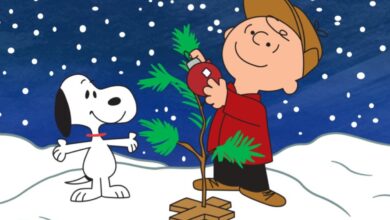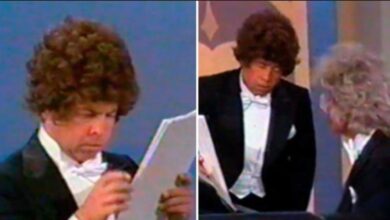Brooks & Dunn’s ‘Little Miss Honky Tonk’ Electrifies Country Radio and Redefines Neon-Era Attitude in 1995
When Brooks & Dunn released “Little Miss Honky Tonk” in early 1995, they weren’t just adding another hit to their fast-growing catalog—they were igniting a movement. The song, a boot-stomping, riff-driven celebration of a barroom beauty queen, climbed swiftly to No. 1 on the Billboard Hot Country Songs chart and became a defining track of the neon-soaked ’90s country boom. It stood out with its bold blend of rock guitar, traditional twang, and playful swagger, helping to further establish Brooks & Dunn not just as country stars, but as cultural anchors for a new era of the genre.
By the time this single hit the airwaves, Brooks & Dunn were already dominating country radio. Comprised of Kix Brooks and Ronnie Dunn, the duo had burst onto the scene in 1991 with their debut album Brand New Man, which yielded four No. 1 singles and redefined the sound of modern country. Hailing from Louisiana and Texas respectively, both men had pursued solo careers before teaming up at the suggestion of music executive Tim DuBois. Their chemistry—Dunn’s rich, commanding vocals paired with Brooks’ energetic stage presence—quickly became the duo’s trademark.
“Little Miss Honky Tonk” was penned by Ronnie Dunn himself, who drew inspiration from the honky-tonk bars and vibrant women who filled the Southern dancehall scene. The song’s protagonist is more than just a pretty face—she’s a fiery, confident figure who owns the room, a “barroom queen in tight blue jeans,” as the lyrics proclaim. Dunn aimed to channel a character who could carry the spirit of the genre’s female icons, blending reverence with modern flair. That blend of character-driven songwriting and lively instrumentation gave the song its enduring appeal.
Recorded at Nashville’s SoundShop Studio and produced by Don Cook and Scott Hendricks, the track was built around a gritty electric guitar riff and driving rhythm section that leaned into country rock territory. Dunn’s vocal delivery alternates between smooth crooning and punchy bravado, giving the lyrics a sense of story and momentum. Fiddle licks and steel guitar flourishes keep the track grounded in its country roots, while the tempo invites dancing—a perfect recipe for line-dance enthusiasts and radio listeners alike.
Upon release, “Little Miss Honky Tonk” became an instant favorite. It soared to the top of the Billboard Hot Country Songs chart, becoming the duo’s seventh No. 1 hit. Critics praised its infectious energy and storytelling flair, and fans flocked to see it performed live, often with Kix Brooks revving up the crowd while Dunn powered through the chorus. The song’s popularity solidified Brooks & Dunn’s reputation as hitmakers and entertainers who could blend rowdy fun with sharp musicianship.
Culturally, the song captured the spirit of mid-’90s country nightlife. At a time when honky-tonk culture was flourishing across the South and Midwest, “Little Miss Honky Tonk” became something of a theme song for women who felt overlooked by more traditional country ballads. It offered a new image: the woman who could dance all night, command a room, and still have dirt on her boots. The song was playful without being patronizing, and it contributed to a broader acceptance of rowdier, sassier female perspectives in country storytelling.
For Brooks & Dunn, the success of “Little Miss Honky Tonk” marked a high point in a run of dominance that few country acts have ever matched. The song’s momentum carried into their Waitin’ on Sundown album cycle, which continued to generate hits and sell out stadiums. It also laid the groundwork for the duo’s ongoing fusion of honky-tonk tradition with rock-inflected energy, a formula they would continue to refine through the rest of the decade.
Its influence can be traced in the work of artists who followed, particularly those blending humor, attitude, and swagger into their female characters—names like Gretchen Wilson, Miranda Lambert, and even early-era Carrie Underwood owe a nod to the kind of unapologetic sass “Little Miss Honky Tonk” normalized. It also helped set the tone for country’s flirtation with crossover pop and rock sounds in the late ’90s and early 2000s.
While not as frequently covered as some of their ballads, “Little Miss Honky Tonk” remains a fan favorite in Brooks & Dunn’s live performances. The duo brought it back during their Reboot tour and Las Vegas residencies, proving that the track still holds the power to get boots tapping and crowds singing. Its place in their setlist often sparks some of the loudest cheers, a testament to its staying power.
At the time of the song’s release, Brooks & Dunn were riding a wave of critical and commercial success, but the pressures of nonstop touring and recording were mounting. Nevertheless, songs like “Little Miss Honky Tonk” allowed them moments of levity and connection with their fans. It was a reminder that country music could be both clever and communal, grounded and grand.
Decades later, the song continues to receive airplay on classic country stations and appears on nearly every Brooks & Dunn greatest hits compilation. Its place in the country music canon is secure—not for being their deepest or most poetic work, but for the way it captured a moment in time when country music was bold, booming, and a little rebellious.
“Little Miss Honky Tonk” also helped shape the aesthetics of country performance. With its dancehall rhythms and vivid imagery, it encouraged artists to embrace storytelling not just in lyrics, but in stage presence and persona. That influence still ripples through the genre today, from Nashville honky-tonks to arena tours.
Though Brooks & Dunn briefly disbanded in 2010, their legacy only grew stronger. When they reunited in later years, fans embraced them like no time had passed. Songs like “Little Miss Honky Tonk” were not just part of the soundtrack of a decade—they were part of people’s lives. In revisiting it today, listeners are reminded of the joy, confidence, and foot-stomping fun that country music can bring.
In the end, “Little Miss Honky Tonk” stands as a celebration—not just of a fictional woman in a Southern barroom, but of a genre unafraid to mix twang with edge. It captured everything Brooks & Dunn did best: storytelling, energy, and unforgettable hooks. And more than 25 years later, it’s still playing in jukeboxes, pickup trucks, and dance halls across the country.





